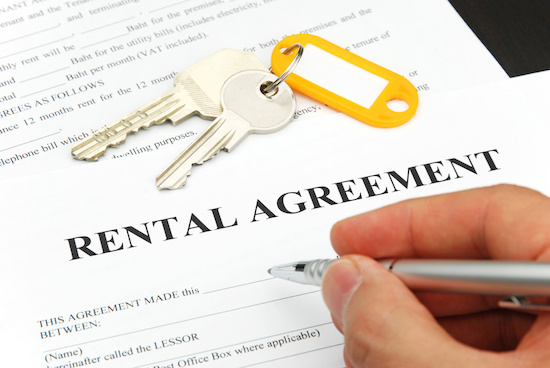
All that legalese in the contract will detail what you are responsible for, how long you’re committing to stay and much more.

It's crucial that renters understand the basic components of a lease or rental agreement. All that legalese in the contract will detail what you are responsible for, how long you’re committing to stay and much more. Leases and rental agreements are legal documents that outline the expectations and responsibilities of the tenant and the landlord or property manager. While the terms 'lease' and 'rental agreement' may be used interchangeably, they have different objectives and durations.
A lease agreement, sometimes called a rental lease agreement, is a contract that specifies a long-term rental period. That means the landlord cannot rent the property to someone else and the tenant is responsible for the monthly rental fees until the lease expires. These typically require 30 days' notice from both tenant and landlord if it will not be renewed. This is the more stable housing option for both parties.
A rental agreement, sometimes referred to as a month-to-month rental agreement, is often used for housing that's needed on a weekly or monthly basis. The downside of short-term rentals is that the landlord can rent the property to someone else once that agreement expires, giving you little notice to vacate. But it could be the best option for those who may relocate or change housing options frequently.
Names of tenants
This lists all adult members living in the residence and makes them legally responsible for maintaining the lease's terms.
Identification of premises
This states the rental's street address and may specify what is included with the agreement, such as a designated parking space or furniture.
Rental term
This verifies the duration of the rental period. For month-to-month rentals, the agreement will indicate that you have the right to live in the rental for each month you pay rent. You or the landlord can terminate the agreement with written notice once that period ends. A standard lease will outline a beginning and ending date (typically lasting from six months to two years). Termination before the ending date is prohibited unless for a reason outlined in the lease or law. Otherwise, you will pay a penalty, which should be detailed in this section.
Rent payments and other fees
This confirms the exact amount you have to pay each month. The agreement should also specify when rent is due and how it should be submitted. Check to see if online payment is an option. Other fees such as security deposits and damage fees must also be outlined here.
Limits on occupancy
This may include limiting the tenancy to residential use (as opposed to it being used as a business or other commercial space) and specifying the number of people who can live in the unit. There may also be restrictions on who can stay overnight.
Subletting exclusions
Some agreements have limits on, or specifically prohibit, tenants from renting to others, also known as subletting.
Information about pets
If pets are allowed, this should be indicated in the document, along with the deposit required should there be animal-related damage to the property.
List of amenities
Any extras covered by your rent should be noted in this section, covering everything from community pool access to covered parking spaces.
List of utilities
This should specify what, if any, utilities such as water and garbage are included in the cost of rent.
Process for requests
This should include who to contact for maintenance or other issues, as well as the request process. Make sure this includes specific contact information and a clear statement of your responsibilities.
Right of entry
This states when and under what circumstances a landlord can enter the rental. It may spell out access for scheduled maintenance.